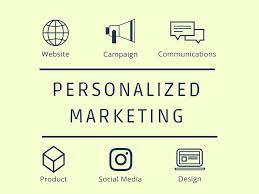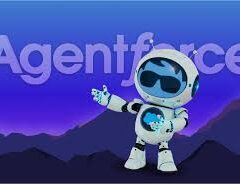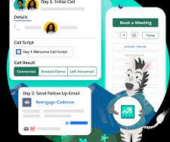It feels like you’ve found “the holy grail” — a customer ready for a long-lasting brand relationship built on personalized marketing leading to customer loyalty. But then, just as quickly as the sparks fly, they fizzle out. Engagement plummets, and those once-enthusiastic customers cool or even disappear. What went wrong? Marketing Personalization Explained.
In the world of personalized marketing, making the wrong moves can turn a promising relationship into a fleeting encounter. Or even a downright negative experience. Salesforce data shows that 81% of customers expect faster interactions as technology advances, and 73% crave better personalization. Without these, poor service can drive customers away, which is the number one reason they stop purchasing.
Customers today value their experience with a company almost as much as their experience with the product or service. Customer experiences can be greatly improved with personalization. And we don’t just mean inserting their first name into an email.
With timely data at your fingertips, influencing customer behavior seems straightforward. But there’s a catch: failing to utilize all available data can negatively impact customer experiences — pushing customers away faster than they can click “unsubscribe.”
At the end of the day, as consumers, we are well aware that our data is being captured and we are willing for that to be so as long as the data is utilized to improve customer experiences. If I’ve just opted out of shoes in your custome preference center and then get an advertisement via email or web site experience pushing shoes, I quickly recognize you are not using the data you are collectig on me. At least not for personalization. So what are you doing with it?
How can you build one cohesive personalized marketing journey instead of a series of disjointed interactions? First, let’s define personalized marketing and then cover some do’s and don’ts for fostering long-term customer relationships.
What is Personalized Marketing?
Personalized marketing ditches the one-size-fits-all approach, using data to tailor messages and offerings to individual customers. This can range from including a customer’s name in an email, to recommending products based on past purchases, to tailoring customer conversations with AI-powered chatbots. Done right, it fosters loyalty and boosts revenue. Done wrong, it becomes annoying and intrusive.
Personalized Marketing in Practice
Personalization continues to evolve, with more than half of marketers now adopting a lifecycle approach. They target potential customers with awareness campaigns and nurture existing ones with product support and loyalty programs. Marketers engage customers across an average of 10 channels, which is what customers expect. However, accessing up-to-date data across all channels can be challenging.
Just like any relationship, personalized marketing requires effort to succeed. Companies must responsibly collect and analyze customer data, translate it into clear audience segments, and share it across departments to create a connected experience. Every interaction, big or small, can make or break a relationship.
Maintaining personalization also requires constant monitoring and adaptation, a challenge for businesses with limited resources. Real-time data driven marketing is powerful. Large enterprises often have more data and the infrastructure to execute complex strategies, while small businesses may rely on simpler tactics. The core idea remains the same — understanding your audience and tailoring your marketing to resonate with them. But, rushing things or being overly clingy can lead to disaster.
The Do’s and Dont’s of Personalized Marketing
Imagine getting served irrelevant ads or recommendations for something you already bought. Perhaps even at a better price than you paid. Building trust with your audience is key to avoiding this. Turn your relationship from doomed to devoted with these tips:
- Don’t Rush the “Get to Know You” Phase Personalize only after understanding your audience’s needs. Collect accurate data and segment your audience based on this data. Look beyond demographics to past campaign interactions to form a deeper understanding of preferences. Don’t let data live in silos.
- Don’t Forget to Collaborate A successful customer relationship thrives on open collaboration between departments and a shared understanding of the customer. Securely accessible and actionable data should be shared across marketing, sales, service, and commerce to create deeper connections and streamline processes. Not only do sales, service, and marketing need to collaborate. If your business has divisions which often lead to additional siloed data, you are losing data as you move from division to division.
- Don’t Be Selfish Treat customer data as a two-way street. Offer valuable content, discounts, or loyalty rewards in return for their insights. Ensure customers understand how their data is used.
- Don’t Send Too Many Messages Avoid overwhelming customers with irrelevant recommendations. Techniques like waterfall segmentation and propensity to purchase scores can prioritize interested audiences and prevent oversaturation.
- Don’t Ignore the Little Details Offer truly personalized experiences in real-time. Target promotions when customers are most engaged and on the channels they frequent. Personalization done right makes customers feel valued. Salesforce Next Best Action can provide targeted details based on real time data about the prospect or customer.
- Don’t Be Inconsistent Consistency in communication is key. Unify customer profiles across all platforms and departments to ensure your messaging stays consistent across all channels.
Personalized Marketing in Action
The honeymoon stage is blissful in relationships as well as consumer interactions, but it’s the next phase that makes or breaks the relationship. Here’s how personalized marketing done right can keep your customers coming back for more.
Example: National Time Outside (NTO) NTO, a fictional outdoor apparel retailer, faced stagnant conversion rates. They knew personalization was key but needed to cater to a diverse customer base. Here’s how they tackled the problem:
- Using Advertising Insights NTO analyzed customer behavior data from advertising campaigns, looking at ad responses, product clicks, and browsing history post-ad click. This provided valuable insights into customer intent and preferences.
- Waterfall Segmentation with a Twist NTO implemented a dynamic “waterfall” approach:
- Basic Demographics: All website visitors were initially categorized by basic demographics like age and location.
- Behavioral Segmentation: Visitors were further segmented based on browsing behavior into subsets like “Bikers,” “Campers,” or “Rock Climbers.”
- Real-Time Personalization: Within each behavioral segment, NTO used up-to-date data to personalize experiences, offering special checkout offers and complementary product recommendations.
By delivering personalized shopping experiences, NTO saw a significant increase in conversion rates. Waterfall segmentation helped prioritize various audience subsets, retain loyal customers, and avoid oversaturation of promotions. Customers received offers and communications that were highly targeted to their interests. Tent campers weren’t receiving ads for RV accessories, and bikers weren’t receiving communications for horseback riding.
Example: Salesforce
At Salesforce, they use their own product, Data Cloud, to cut the time between a lead expressing interest and it being sent to the correct sales rep from 25 minutes to 45 seconds. Processing over 20 million leads annually, Salesforce’s own system, now built on their automation platform Flow, unifies customer data from all sources, making it accessible and actionable across departments.
- Intelligent Lead Routing: Leads are ingested into Data Cloud, enriched, and assigned to sales reps using Data Cloud-powered Flows.
- Automated Sales Alerts & Tasks: Dynamic segments trigger instant Slack alerts for sales reps with recommended next steps.
- AI for Data-Driven Responses: AI-powered predictive models help sales reps understand which products leads are likely to buy.
Personalized marketing is a balancing act requiring resources and expertise. However, truly personalized marketing depends on shared, accessible, and actionable data across the entire business. Ditch the one-size-fits-all approach, invest in your data strategy, and watch your customer relationships blossom with relevant recommendations and experiences that keep them coming back for more. Personalization is about building relationships, and just like in love, every interaction counts.
🔔🔔 Follow us on LinkedIn 🔔🔔












